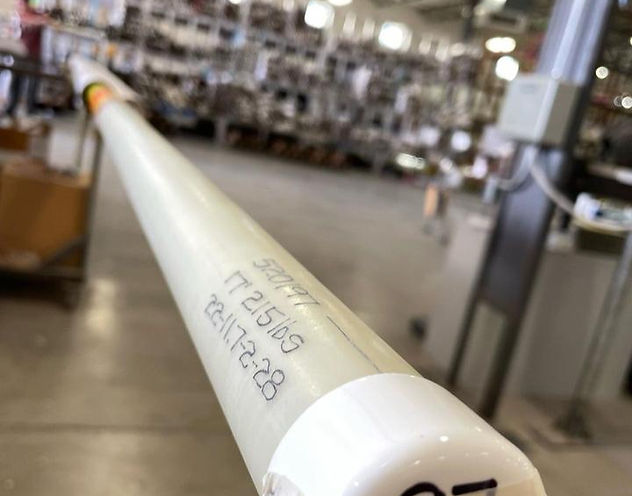Physical Assessments
- paul29416
- Oct 4, 2024
- 2 min read
Specific athletic assessment play a critical role in optimising pole vault performance. Key metrics like Rate of Force Development (RFD), peak force, sprinting velocity, and other physical abilities are essential for identifying strengths and weaknesses in athletes.

Here are some simple assessments we use to determine athletic qualities that are specific to pole vaulting.
Isometric Peak Force
Isometric peak force and RFD are simple measures that can reflect how much and how quickly an athlete can generate force, for example during take-off.
Flying 20m / 10m sprints
Max velocity sprinting, both with and without the pole, is another key assessment. A vaulter’s speed directly affects their energy transfer into the vault. Research shows that faster vaulters tend to perform better as they can convert higher horizontal velocity into kinetic energy stored within the pole.
Jumping
The six-stride long jump and double-leg bound distance assess an athlete’s explosive leg power, which is crucial for generating runway speed and withstanding take-off forces.
Soleus Isometric Peak Force
Soleus strength assessed by its capacity to withstand 1.75-2x body weight, correlates with vaulter’s force transfer, is key in preventing injury and maximising performance during the take-off.
Here is an example of what we assess every 2 months which allows us to monitor progress and fine tune training
Running Peak Velocity M/S |
Fly 20m |
Fly 20m Pole run |
Run way 10m |
Iso Peak Force |
Mid Thigh Pull |
Single Leg Ham 30° |
Seated Soleus 1.75-2xBW Min |
Pull Overs |
Plyometrics |
6 Stride LJ |
3 DL Bounds to pit |
These assessments collectively offer a comprehensive understanding of an athlete’s readiness. Evidence-based research consistently shows strong correlations between these performance metrics and successful pole vaulting attributes like take-off speed, height achieved, and overall vault efficiency. Regular testing helps coaches tailor training programs for enhanced strength, speed, and technique, all of which are essential for elite-level performance.
Videos
How strong is 'strong enough'?
Research based around isometric mid thigh pull indicates that elite athletes including pole vaulters generate the following force profile
Elite males achieve peak force values of 3100-4500Newtons or 40-55n/kg
Elite females achieve peak force values of 2000-3200Newtons or 30-45n/kg
How fast is 'fast enough'?
Elite male vaulters achieve runway speeds between 8.71 and 9.53m/s
Elite female vaulters achieve runway speeds between 7.52 and 8.33m/s
see biomechanics reviews for full details
Conversion Table: Flying 20-meter and 10-meter Sprint Times to m/s
Speed (m/s) | 20m Time (s) | 10m Time (s) |
6.50 | 3.08 | 1.54 |
6.60 | 3.03 | 1.52 |
6.70 | 2.99 | 1.49 |
6.80 | 2.94 | 1.47 |
6.90 | 2.90 | 1.45 |
7.00 | 2.86 | 1.43 |
7.10 | 2.82 | 1.41 |
7.20 | 2.78 | 1.39 |
7.30 | 2.74 | 1.37 |
7.40 | 2.70 | 1.35 |
7.50 | 2.67 | 1.33 |
7.60 | 2.63 | 1.32 |
7.70 | 2.60 | 1.30 |
7.80 | 2.56 | 1.28 |
7.90 | 2.53 | 1.27 |
8.00 | 2.50 | 1.25 |
8.10 | 2.47 | 1.23 |
8.20 | 2.44 | 1.22 |
8.30 | 2.41 | 1.20 |
8.40 | 2.38 | 1.19 |
8.50 | 2.35 | 1.18 |
8.60 | 2.33 | 1.16 |
8.70 | 2.30 | 1.15 |
8.80 | 2.27 | 1.14 |
8.90 | 2.25 | 1.12 |
9.00 | 2.22 | 1.11 |
9.10 | 2.20 | 1.10 |
9.20 | 2.17 | 1.09 |
9.30 | 2.15 | 1.08 |
9.40 | 2.13 | 1.06 |
9.50 | 2.11 | 1.05 |
9.60 | 2.08 | 1.04 |
9.70 | 2.06 | 1.03 |
9.80 | 2.04 | 1.02 |
9.90 | 2.02 | 1.01 |
10.00 | 2.00 | 1.00 |
10.10 | 1.98 | 0.99 |
10.20 | 1.96 | 0.98 |
10.30 | 1.94 | 0.97 |
10.40 | 1.92 | 0.96 |
10.50 | 1.90 | 0.95 |
10.60 | 1.89 | 0.94 |
10.70 | 1.87 | 0.93 |
10.80 | 1.85 | 0.93 |
10.90 | 1.83 | 0.92 |
11.00 | 1.82 | 0.91 |



Comments